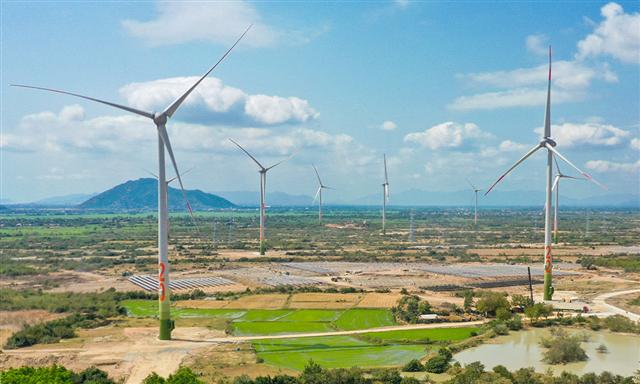Renewable energy potential huge in Laos: govt report
Renewable energy potential huge in Laos: govt report
Although Laos lacks conventional energy resources such as oil and natural gas and has limited reserves of coal, the country has abundant renewable energy resources including biomass, hydropower and solar energy.
This was the finding of a report titled Renewable Energy Development Strategy in the Lao PDR, published in October 2011 by the Ministry of Energy and Mines and supported by the government of Finland.
In some parts of the country there is potential for wind and geothermal energy, according to the publication.
The report notes that the potential of biomass in Laos includes energy crops and organic wastes, such as oily crops, sugar and starch, as well as fast growing trees and aquatic cultures.
The oily crops include palm, jatropha, Vernicia montana, sunflower, beans and coconut; and the sugar and starch include sugarcane, cassava and corn.
Electricite du Laos (EDL) Deputy Managing Director, Mr Savath Phoumlavanh, said yesterday that a sugar producer in Savannakhet province, Mitr Lao Sugar Co Ltd, started supplying energy to the EDL power grid at the end of last year.
Mitr Lao uses waste sugarcane as a fuel to generate energy. This is the first project to use the waste product for energy generation in Laos and is environmentally friendly. It will supply 3MW of energy to EDL for the first year and 6MW in the second year. Power generation will increase each year thereafter depending on generation capacity.
The Lao Indochina Group Public Company Tapioca Factory will run a test on tapioca production using biogas to fuel the process in Vientiane next month. The biogas will replace the use of coal, and will help to reduce air pollution.
A Thai company invested in the biogas plant to resolve the problem of foul odours emanating from the wastewater treatment reservoirs at the factory. The investor also plans to use biogas for electricity generation in the future.
Solar irradiance on Laos is between 3.6 to 5.5 kWh per square metre, with sunshine of between 1,800 to 2,000 hours per year. With such solar energy potential, if photovoltaic technology was used (at an overall efficiency of 10 percent), it would generate 13 MTOE (million tonnes of oil equivalent) of electricity per square kilometre per year.
The Ministry of Energy and Mines' Institute of Renewable Energy Promotion Director General, Mr Hatsady Sysoulath, said yesterday that currently solar energy use in Laos is only about 1MW (about 1,000kWh).
Hydropower is the most important energy resource currently, with technical potential estimated to be around 26,000MW. This figure doesn't include small scale hydropower sites below 15MW, which have an estimated potential of around 2,000MW on their own. Laos currently has 16 hydropower plants with an installed capacity of 2,559.7MW.
There are also a number of biofuel projects underway. Lao Agro Tech Co Ltd has commenced a palm oil project, while a jatropha project is being run by the Republic of Korea's Kolao-Farm & Bio-Energy Co Ltd. Both projects are currently planting out fuel crops in several provinces of Laos.
The Ministry of Energy and Mines is cooperating with Lao Agro-Tech, which plans to grow oil palms as a source of renewable energy, and has a similar arrangement with Kolao.
Biodiesel (BD5) is now being sold in Laos, commencing recently. The institute expects to have produced and sold about 2 million litres of BD5 by the end of this year. BD5 refers to fuel that is 95 percent diesel and 5 percent bio-fuel.
Organic wastes include residues from agriculture and forestry production. Byproducts of the agro-forestry industry which can be burnt for power generation include sawdust, wood chips, rice husks, corn cobs and livestock manure, as well as household, municipal and food processing wastes.
“These sources have not been properly developed as energy sources yet,” Mr Hatsady said.
It was estimated that utilising livestock waste for biogas production could generate about 216 MTOE, the report noted.
vientiane times














